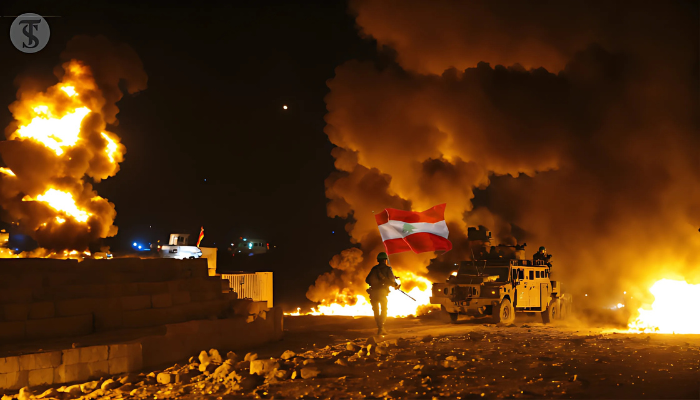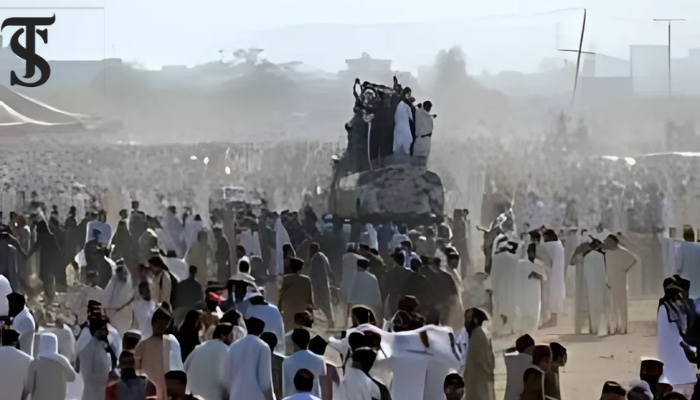Faith and Fire: The Sectarian Roots of Lebanon’s War

- Sectarian Power-Sharing Issues: Lebanon’s sectarian power-sharing model has often reinforced societal divisions, creating more challenges than unity.
- Historical Consequences: Rather than fostering cohesion, this power-sharing approach has intensified sectarian tensions throughout Lebanon's history.
- Need for Reform: Lebanon's experience underscores the necessity of re-evaluating and potentially reforming power-sharing structures to promote genuine national unity.
Historically bound by an identical land, fellow countrymen were torn apart by sectarian strife throughout Lebanon’s Civil War (1975–1990). Brothers shed each other’s blood in the name of religious beliefs, indoctrinated by baseless ancestral myths that ignite a cycle of hatred and violence. This devastating conflict was not just a war of bullets but a war of ideologies where 17 officially recognized sectarian groups—Maronite Christians, Greek Orthodox, Sunni Muslims, Shia Muslims, and Druze have split apart the core components of society, leaving the next generation to question the price of such blind allegiance.
The region was divided because of the Sykes-Picot Agreement between France and Britain after the Ottoman Empire’s defeat in World War I. Lebanon was created under French rule on September 1, 1920, when the Beka’a Valley, Beirut, Tripoli, and Sidon regions were incorporated into Mount Lebanon. The French left Lebanon twenty-three years later, in 1943, and Bashir al-Khuri became the country’s first president. In less than ten years, poverty and corruption created the conditions for a peaceful uprising that resulted in the election of Camille Chamoun, one of the richest people in Lebanese history, to the presidency in the 1950s. As Arab oil wealth surged, Lebanon became a financial hub, with more banks than the Soviet Union However, Lebanon’s sectarian differences were made worse by the US and Soviet Union’s competition for dominance in the region, which prepared the way for civil war.
Instability and bloodshed followed the outbreak of the first civil war in 1958. The crisis worsened until the U.S. Sixth Fleet arrived in Beirut and contributed to negotiating a deal between Egyptian Pan-Arabist leader Gamal Abdel Nasser and U.S. President Dwight D. Eisenhower that led to the formation of a new administration in Lebanon. The Cairo Agreement, which authorized the Palestinian Liberation Organization’s (PLO) armed presence in Southern Lebanon, ignited an even more deadly civil war in Lebanon in 1969. The Israeli occupation of Palestinian territories pushed more Palestinians into Lebanon, intensifying the conflict between the Palestinian factions and the Maronite elite.
One of the bloodiest and most horrifying incidents in modern Middle Eastern history is the slaughter of Sabra and Shatila, which occurred between September 16 and 18, 1982. Thousands of Palestinian refugees lived in the West Beirut refugee camps of Sabra and Shatila at the time of this assassination The Lebanese Christian Phalangist militia carried out the crime, breaking into the camps to retaliate for the murder of their leader, Bachir Gemayel. The Phalangists felt that Gemayel, who had just been elected president of Lebanon, had been murdered by Palestinian militants. The Israeli Defense Forces (IDF), who had surrounded the camps, watched and tacitly approved while the Phalangist militia methodically killed between 800 and 3,500 Palestinians, many of them women, children, and the elderly. As one of the most horrific examples of sectarian violence during the Lebanese Civil War, the slaughter has been extensively criticized, highlighting the deep divisions and atrocities that characterized the conflict.
The Lebanese opposed Israel’s occupation of their country in 1982 and were eventually forced to flee Beirut in 1990. The deal that ended the civil war between Saudi Arabia and Syria in Taif was approved by the US. During this period, Rafic Hariri, the man who was supposed to transform Lebanon, had a major influence. Syrian President Bashar al-Assad said, “The Taif principles can’t be applied in Syria at all.”. The Taif Accords replaced the confessional system that favored Christians with one that gave equal power to both Christians and Muslims.
The Accords mandated a transitional period after which the parliament would be elected based on one person, one vote, and a Senate elected along confessional lines would be created. The Syrian government wouldn’t accept such an agreement with divisions by sects.”. However, for the following fifteen years until Hariri’s murder, Lebanon was ruled by warlords engaged in sectarian agreements. This incident signaled a sea change in the history of the nation. This arrangement gave the Saudis the power of prime minister selection, while Syria received influence and a military presence in Lebanon. In 2005, after Hariri’s death, the Sirayan agreement was killed.
Saudi Arabia had the authority to choose the prime minister, and Syria benefited from influence and a military base in Lebanon. Following Hariri’s passing in 2005, Syria’s influence in Lebanon started to fade. In addition, his passing intensified Sunni-Shia tensions, which in turn created an unstable political and social situation in the region. In a 33-day conflict, Israel attacked Lebanon during this time but Hezbollah was able to repel and pose a serious threat to Israeli forces.
Lebanese politics have been greatly impacted by the ongoing power struggle between regional powers such as Saudi Arabia and Iran, with different Lebanese groups joining forces with these external actors. While Lebanese Sunnis have joined the resistance against Assad, backed by Saudi Arabia and other Gulf governments, Hezbollah (Shia) is working with Iran and Russia to support the Assad dictatorship in Syria. Political instability in Lebanon has been intensified by this sectarian divide, which has also linked the nation to a deeper regional conflict.
The growth of Hezbollah’s power and rivalry with the American-backed PM as a result mini civil war started in 2008 then again Lebanese politicians gathered in a country this time at Qatar for the Doha agreement. The prime minister of Qatar Sheikh Hamad bin Jassim al Thani stated, “With God’s help and thanks to the cooperation of the Lebanese representatives and efforts of the Arab League secretary-general, we have been able to reach an agreement based on consensus between all the Lebanese brothers”. Although the pro-government majority desired to have Hezbollah’s weaponry up for discussion during the negotiations, it will only be brought up about a country’s defense plan.
According to Golkar, none of these disputes arise naturally between humans. It is risky to create political identities based on Sunni and Shia differences; both the affected countries and the region would suffer as a result. The young, the undereducated, and the jobless are the reason for this regional conflict. The hardliners in the US, Israel, Saudi Arabia, and Iran have a kind of covert alliance whereby they support and strengthen one another. There is little sign of any interruption in the supply of raw materials.
Lebanon’s history highlights the dangers of sectarian power-sharing, which has often deepened divisions rather than healed differences. The involvement of external powers like Saudi Arabia and Iran has further exacerbated these tensions, prioritizing foreign interests over national stability. It also emphasizes how dangerous these divisions can be, especially for the young, jobless, and undereducated people in the area who are more vulnerable to extremism. Creating a strong national identity, lowering reliance on outside parties, tackling economic disparity, and encouraging communication and peacemaking are some of the ongoing difficulties. The changes that go beyond sectarian boundaries, strengthen state institutions, and promote social mobility are necessary for Lebanon to achieve long-lasting peace and build a more strong, democratic nation that can move past its sectarian history.

Kainat Rasheed
The author is an International Relations student at Bahria University Islamabad and is dedicated to peacebuilding, social inclusion, and intercultural dialogue. Her focus areas include women’s rights, cyber warfare, sectarian conflicts, and maritime security.






Ezippi Great information shared.. really enjoyed reading this post thank you author for sharing this post .. appreciated